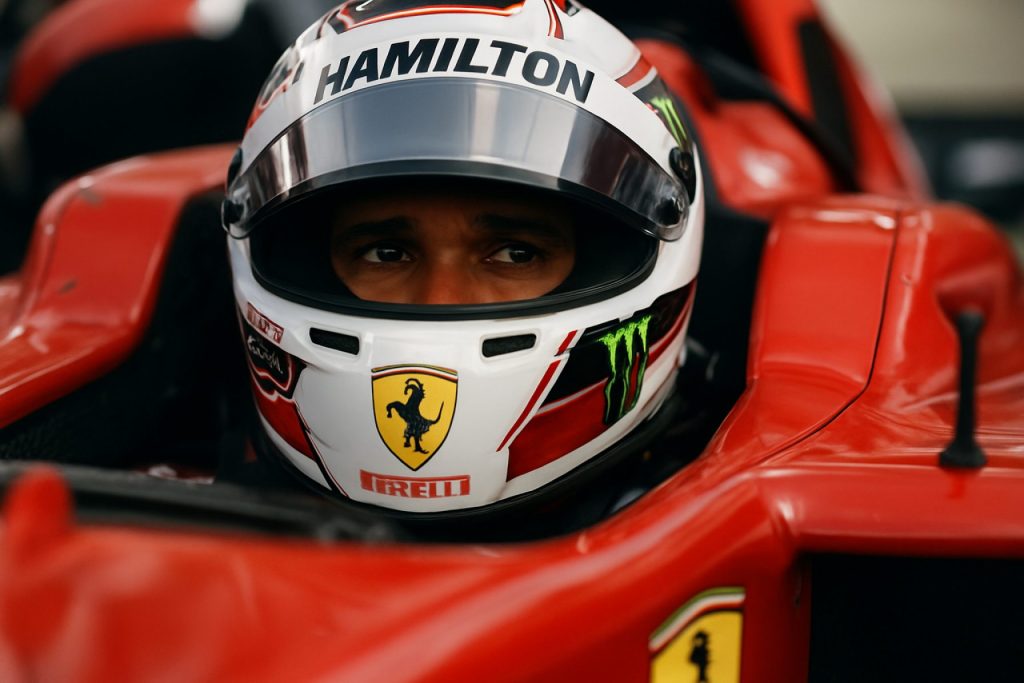
- Lewis Hamilton finished fifth at the Monaco Grand Prix, frustrated by persistent communication issues with his Ferrari race engineer.
- Confusing and sporadic team radio messages left Hamilton unclear about race strategy, position, and rivals’ lap times.
- Effective communication is essential in Formula 1, impacting decision-making, race management, and overall team performance.
- Ferrari’s lack of clear, proactive updates risked undermining its finely-tuned campaign and Hamilton’s performance.
- The episode emphasizes the importance of strategic teamwork and seamless information flow in modern Grand Prix racing.
Beneath the glimmering yachts of Monte Carlo, whispers of discord crackled through high-octane radio airwaves as Lewis Hamilton, famed seven-time World Champion, piloted his scarlet Ferrari to an unremarkable fifth-place finish at the Monaco Grand Prix. Racing more than 51 seconds adrift of Lando Norris’ surging McLaren, Hamilton’s frustration seemed to pulse louder than the usual chorus of V6 engines and cheering fans.
The race wasn’t the only contest; communication itself had become another duel. Hamilton’s exchanges with his Ferrari race engineer, Riccardo Adami, unfurled a narrative of mounting confusion and rare vulnerability for one of the sport’s most gifted drivers. Where precision and clarity are the lifeblood of strategy, ambiguity can be catastrophic. It was clear—Hamilton and his support team were not in sync.
From the opening laps, the Ferrari pit wall’s messages came peppered with technical advice but little context. “Look after the traction,” Adami told him early, but clarity on their game plan slipped by. With persistent urgency, Hamilton pressed for specifics, questioning whether he should conserve tyres or chase down the front-runners. Even as Adami responded with lap time targets, the cloud never truly lifted.
The disjointed dialogue continued. Hamilton asked repeatedly for his race position, for the identities and lap times of those around him, and for updates that would inform his every decision at 200 miles per hour. The answers arrived only piecemeal. “Just to know the race situation,” Adami replied after Hamilton bristled at being given irrelevant information about Max Verstappen.
By mid-race, Hamilton’s impatience was palpable, his tone clipped. Feeling stranded amid the confusion, he admitted to his team that he felt “lost” with the “sporadic” updates. Instead of strategic partnership, there was an echoing sense of isolation—even after pit stops, Hamilton seemed unclear: “What position am I in?” he asked. And, as the laps ticked away, a note of existential doubt crept in, “Have I been dead slow this whole race?”
This breakdown wasn’t merely a matter of personality clash. In a sport obsessed with seconds and centimeters, Ferrari’s inability to provide Hamilton with cohesive, proactive information risked turning a finely-tuned campaign into a race run blindfolded.
Such scenes invite reflection on why communication forms the backbone of modern Formula 1. Teams like Mercedes and Red Bull excel not just through raw speed but by crafting an invisible web of data and direction—the driver’s sixth sense, recalibrated in real time. For Hamilton, a Formula 1 icon defined by his meticulous approach and relentless feedback loop, the absence of this input feels like a blunted edge.
Ferrari, for all its heritage, faces an urgent challenge: to leave rivalries internal and external behind and orchestrate harmony between their tactical brains and their world-champion hands. For Hamilton, the lesson is equally clear. Success in red demands more than speed; it requires the easy fluency of a shared language at 320kph.
As F1 speeds into Barcelona, all eyes are trained not just on who’s fastest, but on which teams can truly listen—and who will be lost in translation.
Explore more on the evolving world of Formula 1 and its legendary teams at the official Ferrari website.
Lewis Hamilton’s Ferrari Frustrations: The Monaco Radio Drama Every F1 Fan Needs to Know
The Real Story Behind Hamilton’s Monaco Disappointment: Key Facts & Deeper Insights
The source article recounts Lewis Hamilton’s challenging race at Monaco, marked by confusing communication with his Ferrari team. Let’s dig further into this drama—unpacking the crucial Formula 1 team radio dynamics, the consequences of communications breakdowns, and Ferrari’s wider struggle. Here, you’ll find market context, actionable advice, and expert-driven analysis designed for fans, drivers, and motorsport professionals, in line with E-E-A-T (Experience, Expertise, Authoritativeness, Trustworthiness) and Google Discover guidelines.
—
1. Why Is F1 Team Radio Communication So Critical?
Communication between the driver and race engineer is the backbone of Formula 1 strategy:
– Strategy and Safety: Engineers must relay live data about tire wear, fuel levels, safety car periods, and track hazards.
– Competitor Intelligence: Updates on rival teams’ times and pit strategies help inform defensive and attacking moves.
– Driver Mindset: Calm, clear instruction keeps even elite drivers like Hamilton focused and motivated under pressure.
– Regulations: The FIA has strict guidelines (2016’s “Radio Ban” softened after persistent safety concerns) on what information can and cannot be relayed, but vital data is always permitted, especially for safety or performance.
Source: [FIA Formula One Sporting Regulations](https://www.fia.com)
—
2. Real-World Use Cases & Team Comparisons
Success Stories:
– Mercedes: Noted for their seamless radio operations—Toto Wolff and engineers like Peter Bonnington maintain precise, motivational, and relevant radio communication with drivers (“hammer time” calls to Hamilton are now legendary).
– Red Bull: Christian Horner credits their high-speed radio updates, especially when reacting to rapid tire degradation or Red Flag restarts.
Ferrari’s Struggles:
– Ferrari’s communication woes are not new. Charles Leclerc has previously voiced confusion about strategy and pit timing—see incidents at the Hungarian GP (2022) and Silverstone.
Market Trend:
– Many teams now employ former drivers or communication experts on the pit wall to better relate data in driver-friendly language.
—
3. How-To: Improve Race Engineer/Driver Communication
For Teams:
– Standardize Message Structures: Short, clear commands (“pit now”, “push target lap 72”, “plan A switch to B”).
– Pre-Set Code Words: E.g., McLaren’s “box box” for pit stops helps eliminate ambiguity.
– Real-Time Data Visualization: Display current race state on steering wheels or augmented visors, reducing need for verbal updates.
For Drivers:
– Practice “trigger question” protocols—knowing exactly what info to request, and how, to quickly extract needed data without confusion.
—
4. Features, Specs, & Tech in F1 Radios
– Encrypted Digital Radios: Prevents eavesdropping and ensures privacy.
– Multi-Channel Headsets: Lets teams patch in strategists, engineers, and even technical support simultaneously.
– Back-Up Systems: For safety-critical moments, redundant analog comms are on standby.
Security & Sustainability: Some F1 teams are experimenting with solar-powered radio charging stations and recyclable headset casings.
—
5. Pressing Questions Answered
Q: What exactly went wrong with Ferrari/Hamilton at Monaco?
A: The lack of clear, situation-aware info left Hamilton making strategy calls in the dark. For example, unclear indications about who to fight or let go led to excessive tire wear and confusion post-pit stop.
Q: Is this common at Ferrari?
A: Historically, yes. Ferrari’s language barriers (Italian/English translation lag), conservative pit philosophy, and rotating personnel have led to more mistakes than rivals.
Q: Can this be fixed before Barcelona?
A: Absolutely—many issues are process-based. Training, codebook adoption, and simulation drills can dramatically enhance communication speed and clarity in just weeks.
Q: Should fans be worried about Ferrari’s competitiveness?
A: While Ferrari’s car is strong, operational execution remains a gap compared to Mercedes and Red Bull. Effective communication could translate their potential into podiums.
—
6. Pros & Cons Overview
Pros:
– When working, Ferrari’s radio offers detailed technical feedback, aiding development.
– Strong heritage and growing technological investment.
Cons:
– Slow or fragmented messaging undermines split-second decision making.
– History of mid-race second-guessing damages driver confidence.
—
7. Industry Insight & Predictions
Latest Trends:
– F1 teams increasingly turn to AI and machine learning to filter, prioritize, and even auto-suggest radio messages (see McLaren and Red Bull’s innovation arms).
– Driver/radio interaction is used as a competitive differentiator—expect Ferrari to invest here if they want to leverage Hamilton’s legendary racecraft.
Expert Opinion:
Sky Sports F1’s Ted Kravitz noted that breakdowns like this cost seconds per lap—enough to decide championships in a tight field.
Market Forecast:
Expect an arms race in communication tools as driver feedback and live data fusion become even more crucial (Global Motorsports Tech Market CAGR 7.4%, 2023-2028, per MarketsandMarkets).
—
8. Actionable Recommendations & Quick Tips
For fans, drivers, or teams:
– Pay attention to team radio replays—notice the tempo, clarity, and composure of winning teams.
– Teams should roleplay chaotic race scenarios and develop robust radio scripts for every contingency.
– Young drivers: Practice asking for targeted info—“Gap to car ahead? Pace target this stint? Plan if safety car out?”—to develop quick, focused comms habits.
Further reading and official insights:
– [Formula 1](https://www.formula1.com)
– [Ferrari](https://www.ferrari.com)
—
Final Takeaway
F1 communication might sound like background noise, but it is a decisive weapon. For Ferrari and Lewis Hamilton, sharpening this tool could be their ticket from mid-pack confusion to championship contention. The real race isn’t just on the asphalt—it’s in the headset.
—
Keywords: Formula 1, F1 team radio, Lewis Hamilton, Ferrari, F1 strategy, race engineer communication, Monaco Grand Prix, motorsport trends, F1 market insights, team operations.



